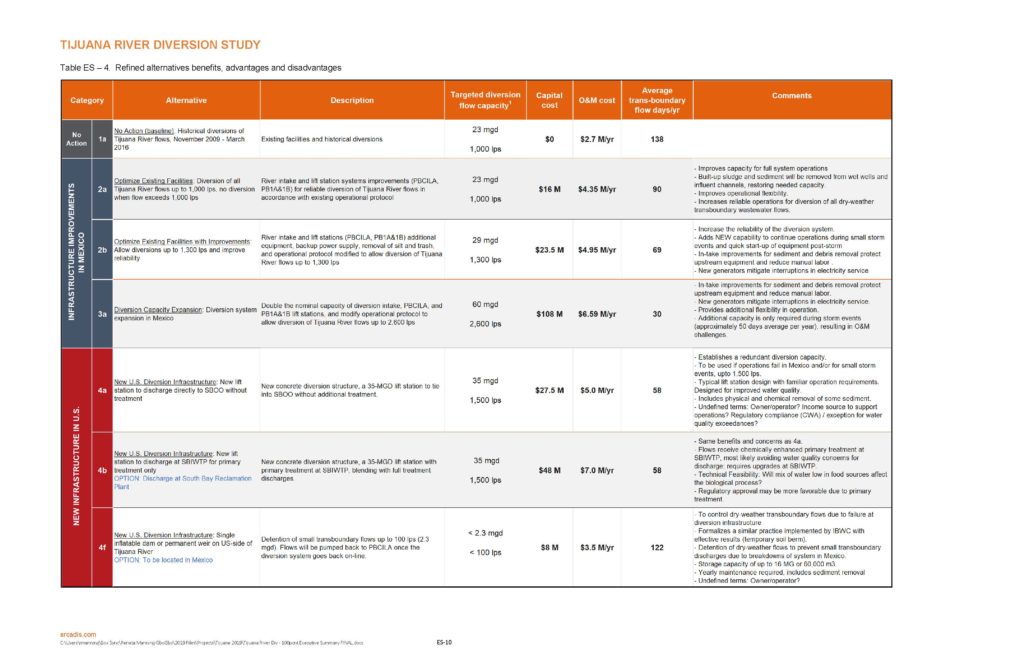July 11, 2019
The Chamber applauds our San Diego Congressional delegation for their ongoing efforts to address transboundary pollution along the U.S.-Mexico border. The House-passed appropriations package for 2020 includes $30 million in funds for the Border Water Infrastructure Program – twice the amount approved in 2018. Congressmembers Vargas, Davis, Peters, and Levin’s amendments to the appropriations package will direct the U.S. Environmental Protection Agency (EPA) to allocate funds prioritizing projects that address the environmental crisis along the southern border, including the Tijuana River Valley transboundary pollution.
The EPA and NADBank recently released the Tijuana River Diversion Study based on their contribution to reduce beach closures and transboundary flows per year, which for the last few years have averaged a total of 138 days.
Alternatives include projects on both sides of the border, such as:
- optimizing existing facilities with improvements in Mexico
- a new lift station in the U.S. to discharge at the south bay international wastewater treatment plant for primary treatment
NADBank’s conclusions highlighted a nearly 30 percent reduction of transboundary flows as a result of improving operation and maintenance on the existing system (down to 98 days per year). Meanwhile, solutions on the southern side of the border are the most cost-effective, and continued investment in infrastructure outside the diversion system is necessary.
The Chamber will continue to work closely with public and private stakeholders on both sides of the border as we focus on evaluating priorities and determine a joint cross-border plan of action that our binational region can advance together.
